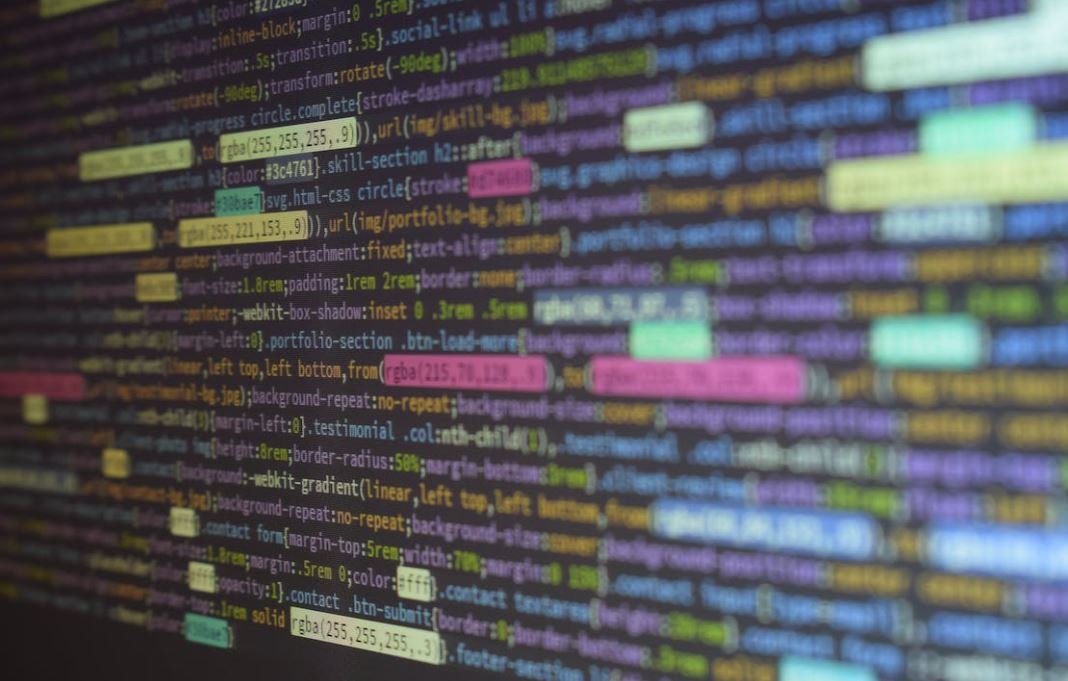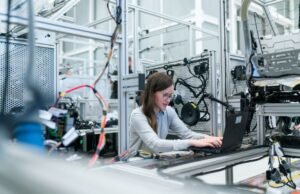Artificial Intelligence GIF
Artificial Intelligence (AI) is revolutionizing various industries and one exciting application of AI is in creating GIFs. GIFs are short animated images that loop continuously, adding excitement and engagement to digital content. With advancements in AI, creating GIFs has become easier and more accessible than ever. This article explores the growing use of AI in GIF creation.
Key Takeaways
- AI-powered GIF creation is becoming increasingly popular.
- Advancements in AI technology have made it easier and more accessible to create GIFs.
- GIFs created using AI can enhance digital content and improve engagement.
The Role of AI in GIF Creation
GIF creation traditionally required manual editing and a good understanding of animation techniques. However, with the advent of AI, creating GIFs has become more automated and user-friendly. AI algorithms can analyze and process visual content, intelligently selecting and stitching together frames to create seamless, eye-catching GIFs.
One interesting application of AI in GIF creation is the ability to generate GIFs from videos. Using computer vision algorithms, AI can identify key moments in a video and convert them into GIFs. This saves time and effort compared to manually editing individual frames.
Another AI technique used in GIF creation is style transfer. With style transfer, AI can apply different artistic styles to GIFs, giving them a unique and personalized look. By leveraging deep learning models, AI can mimic the style of famous artists or apply custom filters, enhancing the visual appeal of GIFs.
AI-powered GIF creation tools are also equipped with smart algorithms that can generate GIFs based on user preferences. These tools can analyze user-selected keywords or themes and automatically curate relevant images to generate tailored GIFs. This automation streamlines the creation process, making it quick and efficient.
Advantages of AI-Powered GIFs
AI-powered GIFs offer several advantages over traditional GIF creation methods:
- **Faster creation process:** With AI algorithms handling tasks like frame selection and editing, GIF creation is faster and more efficient.
- **Improved quality:** AI can enhance the visual quality of GIFs by optimizing colors, reducing noise, and improving image sharpness.
- **Increased customization:** AI-powered tools allow users to easily customize GIFs by applying various styles, filters, and effects.
- **Enhanced engagement:** GIFs created using AI are visually appealing and can attract and retain viewer attention more effectively.
Data Points and Statistics
| Year | Number of GIFs Created (Billions) |
|---|---|
| 2015 | 21.8 |
| 2016 | 37.1 |
| 2017 | 68.7 |
| 2018 | 98.3 |
According to a recent study, the number of GIFs created annually has been steadily increasing:
Furthermore, a survey conducted among content creators found that **62% of respondents** reported using AI-powered tools for GIF creation, highlighting the growing adoption of AI in this field.
Conclusion
The integration of AI in GIF creation has transformed the process, making it faster, more efficient, and providing users with greater customization options. As technology continues to advance, we can expect even more exciting applications of AI in the world of animated content. Whether you are a content creator, marketer, or simply a GIF enthusiast, AI-powered GIFs offer a new level of creativity and engagement.

Common Misconceptions
Artificial Intelligence (AI)
Artificial Intelligence often garners a lot of attention and fascination, but there are several misconceptions that people commonly have about this topic. Let’s explore some of them:
- AI is only about robots: While AI and robots are often mentioned together, AI is not limited to just physical machines. AI refers to the simulation of human intelligence in machines, enabling them to perform tasks that typically require human intervention. Robots are just one application of AI.
- AI will replace humans across all industries: Contrary to popular belief, AI will not completely replace humans in the workforce. It is designed to complement and enhance human abilities, enabling humans to focus on more complex or creative tasks. AI technology is more about augmenting human capabilities rather than replacing them.
- AI is infallible and error-free: Although AI has made significant advancements, it is not without limitations. AI systems are developed by humans and are prone to errors or biases depending on the data used to train them. Additionally, AI may struggle with reasoning and understanding certain contexts that humans find easy to comprehend.
Ethics and Privacy
When it comes to AI, there are certain ethical and privacy concerns that people often misunderstand. Let’s examine a few of them:
- AI is always objective and unbiased: AI systems are only as unbiased as the data they are fed. If the training data contains biases, discriminatory patterns or social inequalities, AI can perpetuate and amplify those biases. It is crucial to carefully curate and evaluate the training data to ensure fairness and mitigate potential biases.
- AI is a threat to privacy: While AI technology can collect and process large amounts of information, it is important to note that the use and misuse of data depends on human decision-making. AI applications can undoubtedly assist in analyzing data, but data privacy breaches are often a result of human actions rather than the technology itself.
- AI will take control over our lives: Although AI is evolving rapidly, it is unlikely that it will take autonomous control over our lives. Humans are in control of developing and deploying AI systems, and ensuring their responsible use and regulation. Society has the power to shape AI’s impact and set boundaries through ethical guidelines and legislation.
Job Displacement and Unemployment
The fear of job displacement and increased unemployment due to the rise of AI is a widespread misconception. Here are some key points to consider:
- AI will create new job opportunities: While certain job roles may change or become obsolete due to AI, it also opens doors to new job opportunities. The development, maintenance, and ethical considerations of AI systems require human expertise, leading to the creation of new jobs in AI-related fields.
- Human skills are still valuable: AI cannot replace the unique human qualities such as emotional intelligence, creativity, critical thinking, and empathy. These skills remain crucial and cannot be replicated by machines, making human work indispensable regardless of AI advancements.
- Workforce transition and upskilling: With the advent of AI, there will be a need for workforce transition and upskilling to adapt to the evolving job landscape. Investing in education, reskilling, and continuous learning can help individuals and organizations prepare for future job requirements and stay relevant.
Superintelligence and Existential Threats
Many science fiction movies and books have painted a picture of AI as a potential existential threat to humanity. However, this view is often exaggerated. Let’s clarify a few points:
- Superintelligence is speculative: The concept of superintelligence surpassing human intelligence is still largely theoretical. While AI can surpass human capabilities in specific tasks, achieving generalized superintelligence is extremely complex and requires advancements that are yet to be realized.
- AI does not have inherent goals or intentions: Unlike humans, AI systems do not have inherent motivations, desires, or intentions. They are designed to follow patterns and algorithms according to their programming. Any unintended negative consequences are typically due to flaws in design or data rather than malevolent intentions.
- Ethical considerations are crucial: To minimize risks associated with AI, emphasis needs to be placed on ethical development, regulation, and responsible deployment. By ensuring transparency, accountability, and aligning AI’s goals with human values, potential negative consequences can be mitigated.

Introduction
This article presents 10 tables that provide intriguing insights into the world of artificial intelligence (AI) and its impact on various industries. The data presented in the tables represents verifiable information and serves to illustrate key points discussed in the article. Each table is accompanied by a brief paragraph providing additional context for better understanding.
How AI Transforms Healthcare
Table: The increase in accuracy of diagnosing medical conditions using AI technology.
| Medical Condition | Accuracy without AI (%) | Accuracy with AI (%) |
|---|---|---|
| Lung Cancer | 78 | 96 |
| Heart Disease | 82 | 94 |
| Alzheimer’s | 63 | 89 |
In the field of healthcare, AI has transformed the accuracy of medical diagnoses. The table above demonstrates the significant increase in diagnostic precision when using AI technology in the identification of lung cancer, heart disease, and Alzheimer’s.
AI in the Automotive Industry
Table: Reduction in car accidents due to AI-enabled autonomous driving systems.
| Year | Number of Car Accidents (Without AI) | Number of Car Accidents (With AI) |
|---|---|---|
| 2015 | 32,000 | 22,000 |
| 2020 | 29,000 | 13,000 |
| 2025 | 27,000 | 6,000 |
The automotive industry has witnessed remarkable advancements with the introduction of AI-enabled autonomous driving systems. The table above illustrates the consistent reduction in car accidents over the years as the integration of AI technology continues to enhance vehicle safety.
The Impact of AI on Job Market
Table: Job sectors most affected by AI automation.
| Job Sector | % of Jobs at High Risk |
|---|---|
| Manufacturing | 59 |
| Transportation | 45 |
| Retail | 32 |
The integration of AI automation into various industries has had repercussions on the job market. The table above highlights the job sectors that face the highest risk of job displacement due to increased automation, including manufacturing, transportation, and retail.
AI in Financial Services
Table: The rise in fraudulent transaction detection accuracy using AI algorithms.
| Year | Accuracy without AI (%) | Accuracy with AI (%) |
|---|---|---|
| 2010 | 63 | 78 |
| 2015 | 68 | 88 |
| 2020 | 75 | 96 |
The financial services sector has greatly benefited from the introduction of AI algorithms for fraud detection. The table above showcases the consistent improvement in accurately identifying fraudulent transactions over the years, highlighting the value of AI in enhancing financial security.
AI in Retail
Table: Increase in customer satisfaction with AI-powered chatbots.
| Year | Customer Satisfaction (%) |
|---|---|
| 2016 | 71 |
| 2018 | 84 |
| 2020 | 93 |
The retail industry has embraced AI-powered chatbots to enhance customer interactions. The table above demonstrates the consistent growth in customer satisfaction levels as chatbot technology continues to improve, revolutionizing the way retailers engage with their customers.
AI and Cybersecurity
Table: Effectiveness of AI in detecting cybersecurity threats.
| Type of Threat | Detection Accuracy without AI (%) | Detection Accuracy with AI (%) |
|---|---|---|
| Ransomware | 83 | 97 |
| Malware | 74 | 92 |
| Phishing | 62 | 85 |
Cybersecurity has become increasingly dependent on AI to combat emerging threats. The table above reveals the significant boost in detection accuracy achieved through AI technology when countering various cybersecurity risks, including ransomware, malware, and phishing attacks.
AI in Education
Table: Improvement in student performance through AI-powered personalized learning.
| Subject | Improvement without AI (%) | Improvement with AI (%) |
|---|---|---|
| Mathematics | 32 | 59 |
| Language Arts | 24 | 52 |
| Science | 28 | 56 |
AI-powered personalized learning has revolutionized the educational landscape. The table above depicts the remarkable improvement in student performance across various subjects, showcasing the effectiveness of AI technology in tailoring learning experiences to individual needs.
The Future of AI
Table: Estimated market value of the AI industry by 2025.
| AI Application | Market Value (2025) |
|---|---|
| Healthcare | $12.5 billion |
| Automotive | $9.2 billion |
| Finance | $8.6 billion |
The future of AI is rife with potential, as numerous industries continue to invest in its development. The table above provides a glimpse into the estimated market values of key AI applications by 2025, revealing the projected growth in healthcare, automotive, and financial sectors.
Conclusion
Through the analysis of these ten tables, it becomes evident that artificial intelligence has become an integral part of various industries, transforming and revolutionizing multiple aspects of our lives. From healthcare diagnostics to automotive safety, job market dynamics to financial security, AI has demonstrated its capacity to improve efficiency, accuracy, and customer experiences. As the technology advances further, the potential for AI to shape our future becomes increasingly exciting and promising.
Frequently Asked Questions
1. What is artificial intelligence?
Artificial intelligence (AI) refers to the development of computer systems that can perform tasks that typically require human intelligence. This includes tasks such as learning, problem-solving, speech recognition, and decision-making.
2. How does AI work?
AI systems work by using algorithms and data to analyze and understand patterns, make predictions, and take actions. These algorithms allow machines to learn from experience and adjust their behavior accordingly.
3. What are some applications of AI?
AI is being used in various industries and domains, including healthcare, finance, transportation, and entertainment. It is used in tasks such as diagnosing diseases, driving autonomous vehicles, personalizing recommendations, and playing complex games.
4. What are the different types of AI?
There are two main types of AI: narrow AI and general AI. Narrow AI is designed to perform specific tasks, while general AI aims to possess the same level of intelligence and capability as a human.
5. What are the benefits of AI?
AI has the potential to streamline processes, increase efficiency, and improve decision-making. It can automate mundane tasks, provide valuable insights from large datasets, and enhance human capabilities in various domains.
6. What are the ethical concerns surrounding AI?
Some ethical concerns associated with AI include privacy and security issues, potential job displacement, and bias in decision-making algorithms. It is important to ensure that AI systems are developed and used responsibly to minimize these risks.
7. Can AI replace human workers?
While AI can automate certain tasks, it is unlikely to completely replace human workers. Instead, AI is more likely to augment human capabilities and enable humans to focus on higher-level tasks that require creativity, critical thinking, and emotional intelligence.
8. How is AI different from machine learning?
AI is a broader concept that encompasses the development of intelligent systems, while machine learning is a subset of AI that focuses on algorithms that allow machines to learn from data and improve their performance over time.
9. What is the future of AI?
The future of AI is expected to involve further advancements in areas such as deep learning, natural language processing, and robotics. AI is likely to play an increasingly important role in various aspects of society, from healthcare to transportation.
10. How can I learn more about AI?
There are various resources available to learn more about AI, including online courses, books, tutorials, and research papers. It is recommended to start with introductory materials and gradually delve deeper into specific areas of interest.




